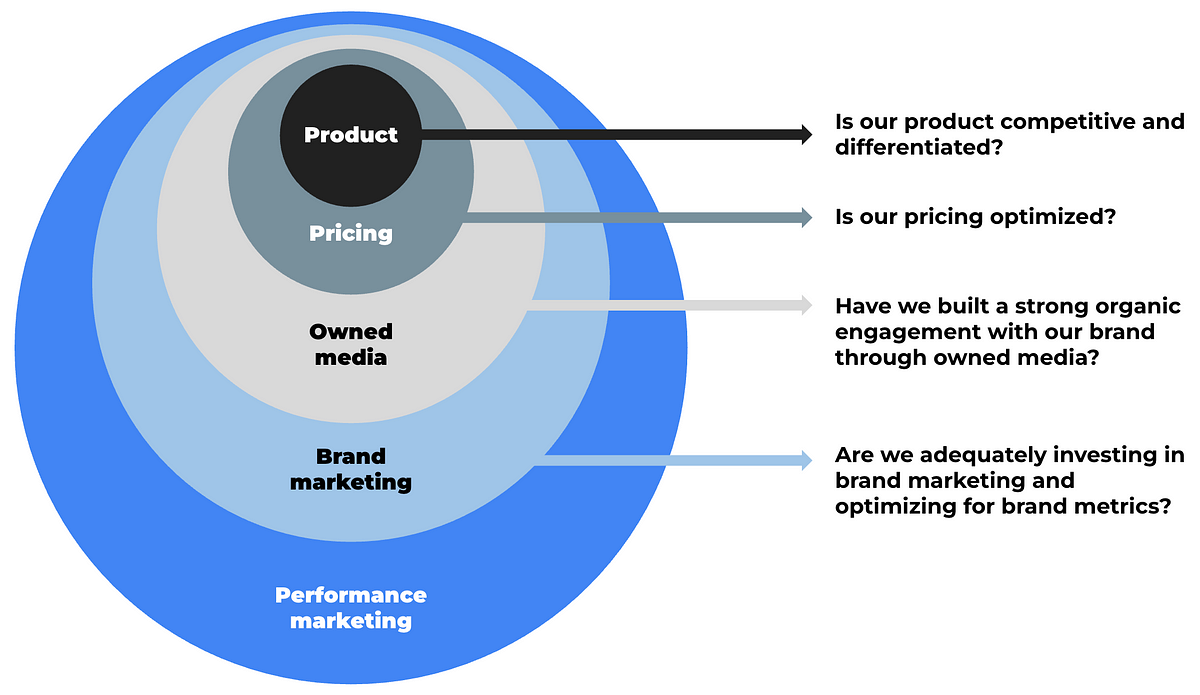Product Management News
Medium
405

Image Credit: Medium
Not Another PM List: These 11 Hacks Genuinely Make a Difference
- Maintain a frictionless capture process to reduce clutter and focus on real strategy work.
- Implement time-boxing for different tasks to improve productivity and reduce decision fatigue.
- Use constraints to drive better thinking and innovation, promoting simplicity and faster feedback cycles.
- Encourage curiosity and delegation to build trust, solve problems effectively, and focus on high-leverage work.
Read Full Article
23 Likes
Medium
68

Image Credit: Medium
The User-Assumption Trap: 4 Hard Lessons from the Field
- Lessons learned from assumptions while building SparrowGenie product underscore importance of user feedback.
- Initial validation fell short when target users turned out to be champions, not buyers.
- Rebuilt pitch focusing on IT buyers, shifted from emotional to logical approach.
- Discovered pitfalls of launching MVP prematurely and challenges of AI product adoption.
- Emphasized need for behavior change in AI adoption, importance of clear communication for visibility.
Read Full Article
4 Likes
Logrocket
135

Image Credit: Logrocket
Leader Spotlight: Building a human-focused AI product, with Cory Bishop
- Cory Bishop, Senior Product Manager at Bubble, discusses human-centered AI design.
- Bubble enables users to build scalable businesses with no-code AI development.
- AI empowers less technical users to create custom, scalable platforms like never before.
- Bubble focuses on balancing functionality and design while keeping the human element central.
Read Full Article
7 Likes
Medium
194

Image Credit: Medium
The Egg Puff Effect: Why Your Product Can’t Ignore That One Repeated Ask
- During the summer, a mom asked her daughter to list special dishes she wanted to be cooked, and she happily complied with the requests.
- As the daughter's list of dishes kept growing and evolving, the mom also added her own creations to the menu, which the daughter enjoyed.
- One day, the daughter gently pointed out that her mom's repeated cooking of the requested items made them less special, leading the mom to realize the importance of variety and significance in gestures.
- The incident made the mom reflect on the balance between meeting requests and maintaining the uniqueness of special gestures, highlighting the 'Egg Puff Effect' in maintaining the impact of repeated actions.
Read Full Article
11 Likes
Discover more
- Programming News
- Software News
- Web Design
- Devops News
- Open Source News
- Databases
- Cloud News
- Operating Systems News
- Agile Methodology News
- Computer Engineering
- Startup News
- Cryptocurrency News
- Technology News
- Blockchain News
- Data Science News
- AR News
- Apple News
- Cyber Security News
- Leadership News
- Gaming News
- Automobiles News
Medium
198

Image Credit: Medium
Why Your Product’s Value Proposition Matters More Than AI Hype
- When building a product, focusing on a clear value proposition is crucial to meet users' expectations.
- Many teams prioritize trends and AI integration over delivering real value to users.
- It is important to avoid spreading oneself too thin by trying to do everything at once and instead focus on excelling in one core feature.
- Integrating AI should serve to enhance user experience, not just for the sake of having AI features.
Read Full Article
11 Likes
Medium
307

Image Credit: Medium
The Intersection of LLMs and Product Management: A New Frontier for Builders
- Product managers are now collaborating with AI, architecting probabilistic systems, and defining new product categories, thanks to Large Language Models (LLMs).
- LLMs are transforming the product discipline, accelerating product discovery, shortening the path from idea to testable concept, and changing how products are spec'd, tested, and evaluated.
- LLMs enable rapid prototyping and testing of products like smart writing assistants, AI tutors, or onboarding bots, leading to quicker validation of interactions and emphasizing user-facing features.
- PMs in the LLM era must focus on data quality, incorporating data strategy into product strategy, building interfaces for explainability, and redefining their role as systems designers and AI interpreters.
Read Full Article
18 Likes
Medium
8

Image Credit: Medium
The Four Questions to Ask Before Planning Your Performance Marketing Campaign
- Focus on strategic product improvements to position for double-digit growth.
- Optimize pricing to complement differentiated product features for competitive advantage.
- Utilize owned, earned, and paid media strategically to amplify brand messaging.
- Proceed to paid media only after fully optimizing product, pricing, and owned media.
- Balance brand marketing with performance marketing for long-term growth and ROI.
Read Full Article
Like
Medium
44

Image Credit: Medium
Exit Strategies for Traders
- A trailing stop is a dynamic exit tool that automatically adjusts the stop-loss level as the market price rises, helping traders lock in gains without constant monitoring.
- Trailing stops follow the price at a specified distance, moving upward for long positions; if the asset price reverses by that distance, the position is sold.
- Benefits of using trailing stops include automatic profit locking, emotionless capital protection, staying in winning trades longer, and removing fear and greed from trading decisions.
- Trailing stops are particularly useful in volatile markets like crypto, allowing traders to ride the wave without worrying about significant price fluctuations.
Read Full Article
2 Likes
Medium
316

Image Credit: Medium
Share UnionEx “Trade to Earn” & Win USDT!
- UnionEx has launched a 'Trade to Earn' campaign, allowing users to earn free USDT by sharing their trading experiences.
- Participants can trade on UnionEx, share their experiences on various platforms like Reddit, TradingView, CoinMarketCap, Quora, Medium, and crypto forums, and submit a form to be eligible for rewards.
- Ideas for sharing include reviewing the UnionEx interface, discussing trading experiences, providing tips for new traders, and highlighting the benefits of the 'Trade to Earn' feature.
- The campaign offers participants the opportunity to earn free USDT, gain visibility, support decentralized exchanges, and be part of a growing community. The program is for a limited time, encouraging early participation.
Read Full Article
19 Likes
Medium
304

Image Credit: Medium
Crypto Exchange Security: Protecting Your Digital Assets
- Crypto exchange security involves measures to protect users' funds, data, and trading activities on cryptocurrency platforms.
- Key elements include Two-Factor Authentication (2FA), compliance with AML and KYC regulations, regular security audits, withdrawal whitelists, cold wallet storage, and careful partner selection.
- Common red flags to watch out for include lack of 2FA, no public record of audits, unclear withdrawal policies, and poor customer service.
- UnionEx ensures security through advanced 2FA, AML/KYC compliance, security audits, withdrawal whitelists, cold storage, and vetted partners, emphasizing user education for asset protection in the crypto space.
Read Full Article
18 Likes
Medium
408

Image Credit: Medium
AI won’t build your app — but it will change how product leaders build
- Product leaders with coding backgrounds are successfully using AI tools like GPT-4, Cursor, and Supabase to build functional prototypes quickly.
- AI is not a replacement for experienced engineers but can assist in expressing intent through code, testing ideas, and providing starting points for engineering teams.
- While AI may not handle complex tasks independently, it accelerates collaboration, reduces translation time, and helps in iterating ideas efficiently.
- AI empowers product leaders to create, validate, and iterate rapidly, emphasizing the importance of leveraging AI's capabilities for momentum in app development.
Read Full Article
21 Likes
Medium
250

Image Credit: Medium
Why I Apply to Product Jobs I Don’t Even Want
- The author shares their approach of applying to product jobs they may not initially want, citing valuable learning experiences from the process.
- They emphasize the importance of having a well-defined set of stories, researching companies, and staying prepared for interviews without overdoing it.
- The author compares their interview preparation to how a basketball player like Luka Dončić gradually improves through real games instead of just practicing.
- By applying to various roles early in their career, despite rejections, the author built a strong foundation and network, advocating for the value of broadening one's job search.
Read Full Article
14 Likes
Medium
390

Image Credit: Medium
Why Business Value Is a Lie
- Business value is a subjective concept that varies depending on who is involved in decision-making.
- The belief in business value is a story that people tell themselves about what will be important, and it can differ from person to person.
- Factors like competing stakeholder views, estimation bias, and politics contribute to the subjectivity of business value.
- It is essential to acknowledge and discuss the subjective assumptions about business value to make informed decisions collectively.
Read Full Article
23 Likes
Medium
288

Image Credit: Medium
AI Isn’t Here to Replace Us. It’s Here to Help Us Remember.
- AI is being developed to help individuals preserve and access memories locally in an AI-powered concept called mem.ry, especially as the global population ages and cases of memory loss increase.
- Despite the capabilities of AI in generating content and assisting with tasks, it is emphasized that AI cannot replace the depth of human experiences, memories, and emotions, offering only a mirror to capture stories.
- Concerns are raised about the biases, blind spots, and limitations of AI models, juxtaposed with the imperfect nature of human memory, which is prone to errors, emotional influences, and reconstruction of narratives.
- The future of AI is predicted to focus on flooding markets with 'good enough' content, while human-made work will gain value for its ability to provide genuine connections and emotional resonance that AI may not replicate.
Read Full Article
17 Likes
Medium
114

The Evolution of Product Management: What I’m Learning About the AI PM Role
- Delving into the AI PM role evolution through research and interviews.
- Discovering essential skills, risk management, communication, and continuous learning patterns for AI PMs.
- Learning from case studies like Netflix and Spotify on AI product development approaches.
- AI PMs navigate uncertainty, multi-dimensional validation, post-launch monitoring, and regular retraining cycles.
- Preparation involves psychological shift, practical development path, and high-impact learning areas.
Read Full Article
1 Like
For uninterrupted reading, download the app